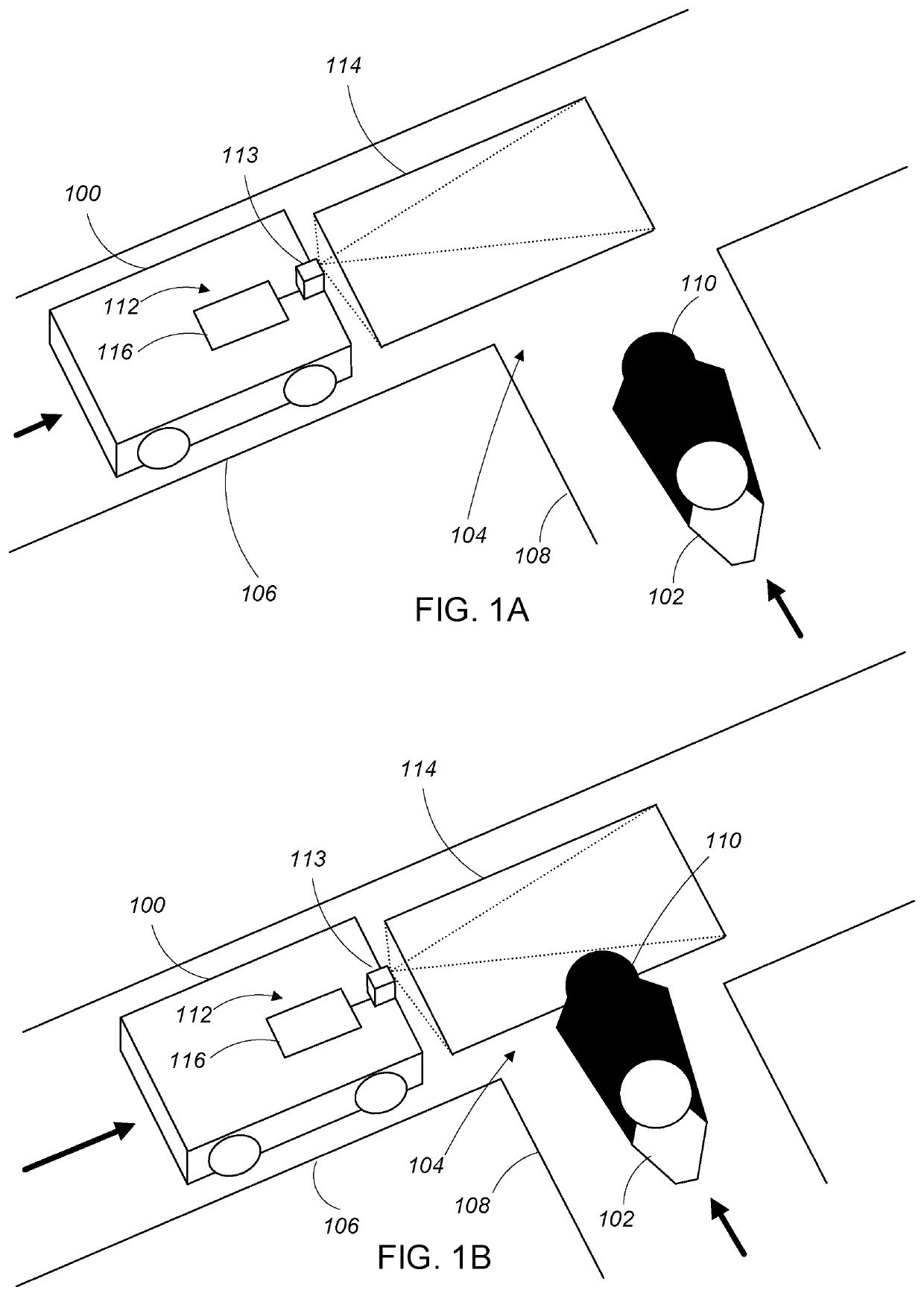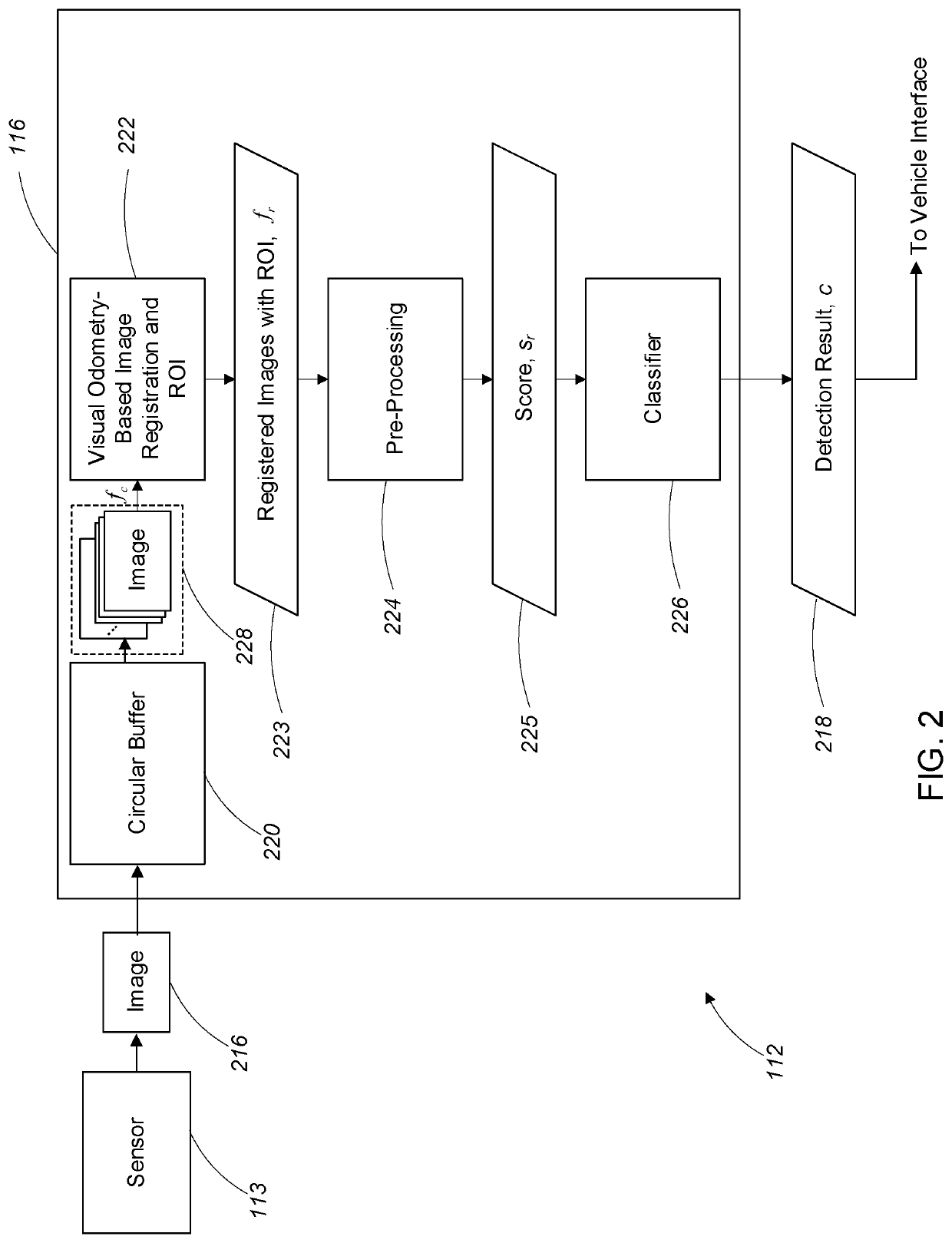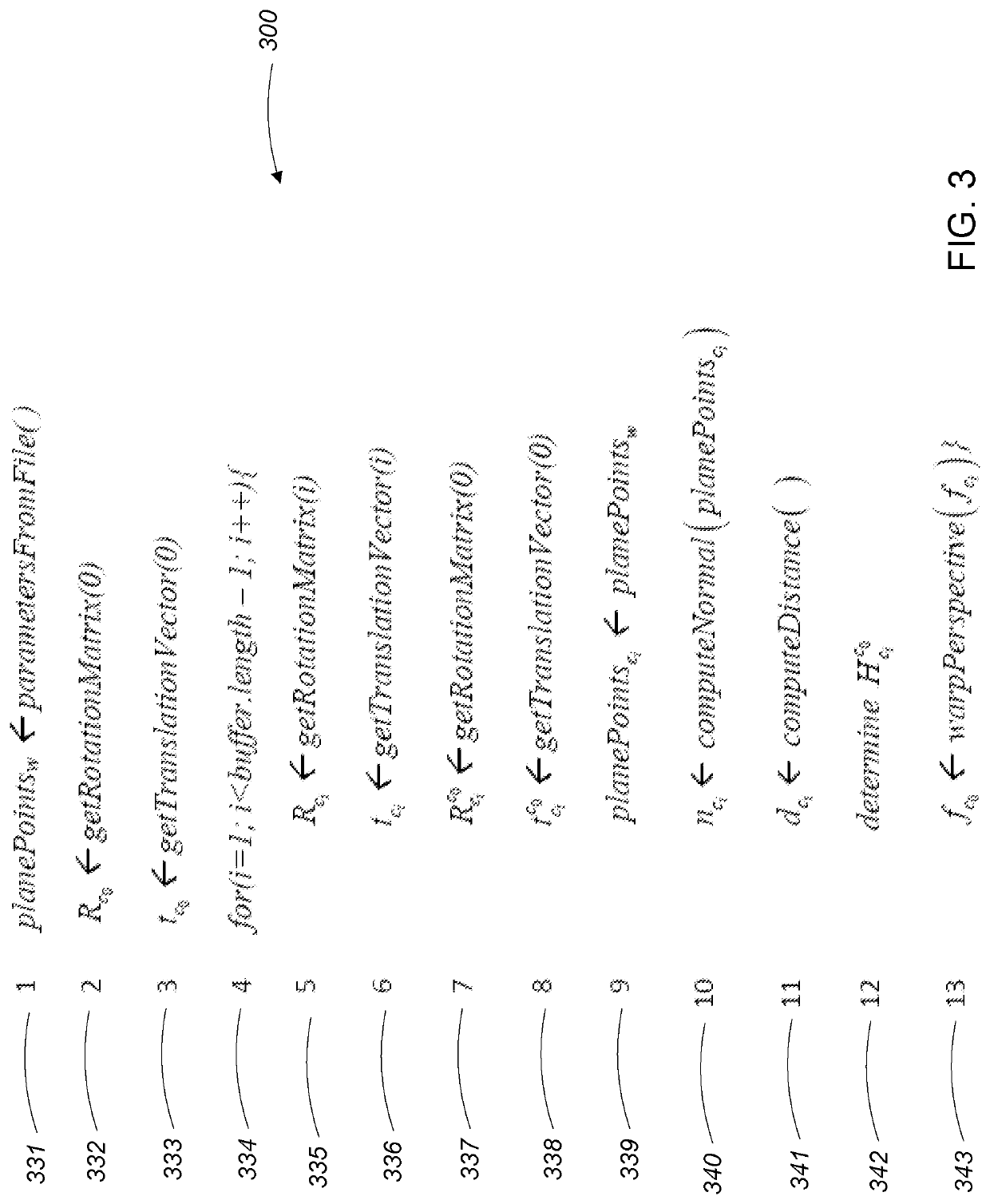Non-line of sight obstacle detection
- Summary
- Abstract
- Description
- Claims
- Application Information
AI Technical Summary
Benefits of technology
Problems solved by technology
Method used
Image
Examples
Embodiment Construction
1 Overview
[0031]Referring to FIGS. 1A and 1B, two objects (in this case a vehicle 100 and a pedestrian 102) are each approaching an intersection 104 of two paths 106, 108 (e.g., roads or hallways). The pedestrian 102 casts a shadow 110 in a direction toward the intersection 104 such that the shadow reaches the intersection prior to the pedestrian physically reaching the intersection (i.e., the shadow “leads” the pedestrian). The vehicle 100 includes an obstacle detection system 112, which includes a sensor 113 (e.g., a camera) and a sensor data processor 116. Very generally, the obstacle detection system 112 is configured to detect dynamic (i.e., moving) obstacles that are out of the direct line-of-sight from the viewpoint of the moving vehicle 100 based on changes in illumination (e.g., moving shadows or moving illumination) that are or become present in the direct line-of-sight of the vehicle as it travels along its path. The vehicle may then take action (e.g., evasive action) bas...
PUM
 Login to View More
Login to View More Abstract
Description
Claims
Application Information
 Login to View More
Login to View More - R&D
- Intellectual Property
- Life Sciences
- Materials
- Tech Scout
- Unparalleled Data Quality
- Higher Quality Content
- 60% Fewer Hallucinations
Browse by: Latest US Patents, China's latest patents, Technical Efficacy Thesaurus, Application Domain, Technology Topic, Popular Technical Reports.
© 2025 PatSnap. All rights reserved.Legal|Privacy policy|Modern Slavery Act Transparency Statement|Sitemap|About US| Contact US: help@patsnap.com



